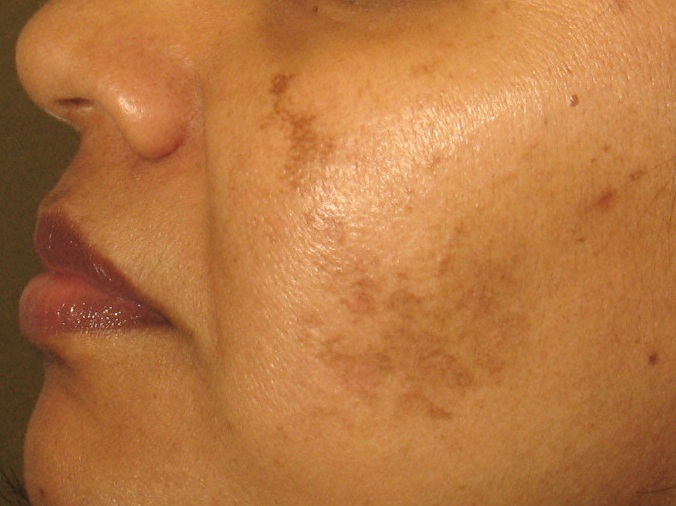Age spot is a skin condition characterized with blemishes on the skin surface frequently exposed to the sunlight like face, hands, shoulder and arms. The skin colour change ranges from light brown to red or black. Age spot is very common in adults older than 50years but can be seen in young people too. It is also called liver spots, sun spots or solar lentigines.

Age spots are quite harmless and does not require medical intervention except for cosmetic reason. They are flat and oval shape. They are commonly seen among people who are light skinned.
WHAT CAUSES AGE SPOT
Age spots are caused by overactive pigment cells. Ultraviolet light from the sun accelerates the production of melanin. On the areas of skin that have had years of frequent and prolonged sun exposure, age spots appear when melanin becomes “clumped”or is produced in high concentrations. The use of tanning can also contribute to the the development of age spot.
WARNING SIGNS
It is best you have any new skin changes evaluated by a doctor because it might be melanoma (a skin cancer), especially if a spot is:
- Darkly pigmented
- Rapidly increasing in size
- Having combination of colours
- Has irregular borders.
- Itching, red, painful or bleeding.
TREATMENT
The treatment options for age spots is either to lighten the skin or remove them. The following treatment options are adoptable:
- Medication: The spots gradually fade with hydroquinone alone or with retinoid and mild steroids gradually over several months. Consult your doctor before you use any of these drugs because of possible side effects.
- Freezing (cryotherapy): In this method, the excess or extra melanin pigment deposited in age spots are destroyed by applying cold liquid nitrogen for just 5 seconds or less. This treatment may temporarily irritate the skin and cause scarring and discolouration.
- Intensity pulsed light: This method involves the the use of high intensity beam to destroy the melanin-producing cells without damaging the skin’s surface.
- Chemical peel: This method involves applying a chemical solution to the skin to remove the top layers. New, smoother skin forms to take its place. Possible side effects include scarring, infection, and lightening or darkening of skin color. Redness lasts up to several weeks. You might need several treatments before you notice any results.
HOW TO PREVENT AGE SPOTS AFTER TREATMENT
- Avoid the sun between the hour of 10am-2pm because sun’s ray are most intense during this time. Get your outdoors activities done in other times of the day.
To avoid exposure to intense sun’s ultraviolet radiation, wear a tightly fitted woven clothing that covers your arms and legs and a broad-brimmed hat which provide more protection than baseball cap.

Dr. Adeyemo Olusola is a medical graduate of Olabisi Onabanjo University, Ogun State, Nigeria along with certificate in advanced diploma in Principles of Nutrition, Management and Leadership, Dublin and Certificate in Global Health from London School of Hygiene and Tropical Medicine. In addition to his numerous certifications, he is a certified Telemedicine Physician from Harvard Medical School, USA. He is an avid reader of books from different oases of life, expert in data analysis. “So many a time, I have seen people die avoidable death because of lack of knowledge or information, falling victim of fate. There is then a necessity laid on us to help arm our society to the teeth, as a healthy society cannot be detached from an informed one. Hence, there is need for healthgist.net. We hope you will have a wonderful stay on our website.”

